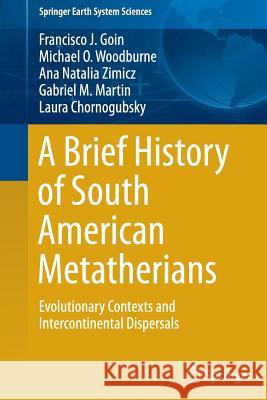A Brief History of South American Metatherians: Evolutionary Contexts and Intercontinental Dispersals » książka
topmenu
A Brief History of South American Metatherians: Evolutionary Contexts and Intercontinental Dispersals
ISBN-13: 9789401779258 / Angielski / Miękka / 2016 / 237 str.
A Brief History of South American Metatherians: Evolutionary Contexts and Intercontinental Dispersals
ISBN-13: 9789401779258 / Angielski / Miękka / 2016 / 237 str.
cena 402,53
(netto: 383,36 VAT: 5%)
Najniższa cena z 30 dni: 385,52
(netto: 383,36 VAT: 5%)
Najniższa cena z 30 dni: 385,52
Termin realizacji zamówienia:
ok. 22 dni roboczych
Dostawa w 2026 r.
ok. 22 dni roboczych
Dostawa w 2026 r.
Darmowa dostawa!
Kategorie:
Kategorie BISAC:
Wydawca:
Springer
Seria wydawnicza:
Język:
Angielski
ISBN-13:
9789401779258
Rok wydania:
2016
Wydanie:
Softcover Repri
Ilość stron:
237
Waga:
0.36 kg
Wymiary:
23.39 x 15.6 x 1.35
Oprawa:
Miękka
Wolumenów:
01
Dodatkowe informacje:
Wydanie ilustrowane











